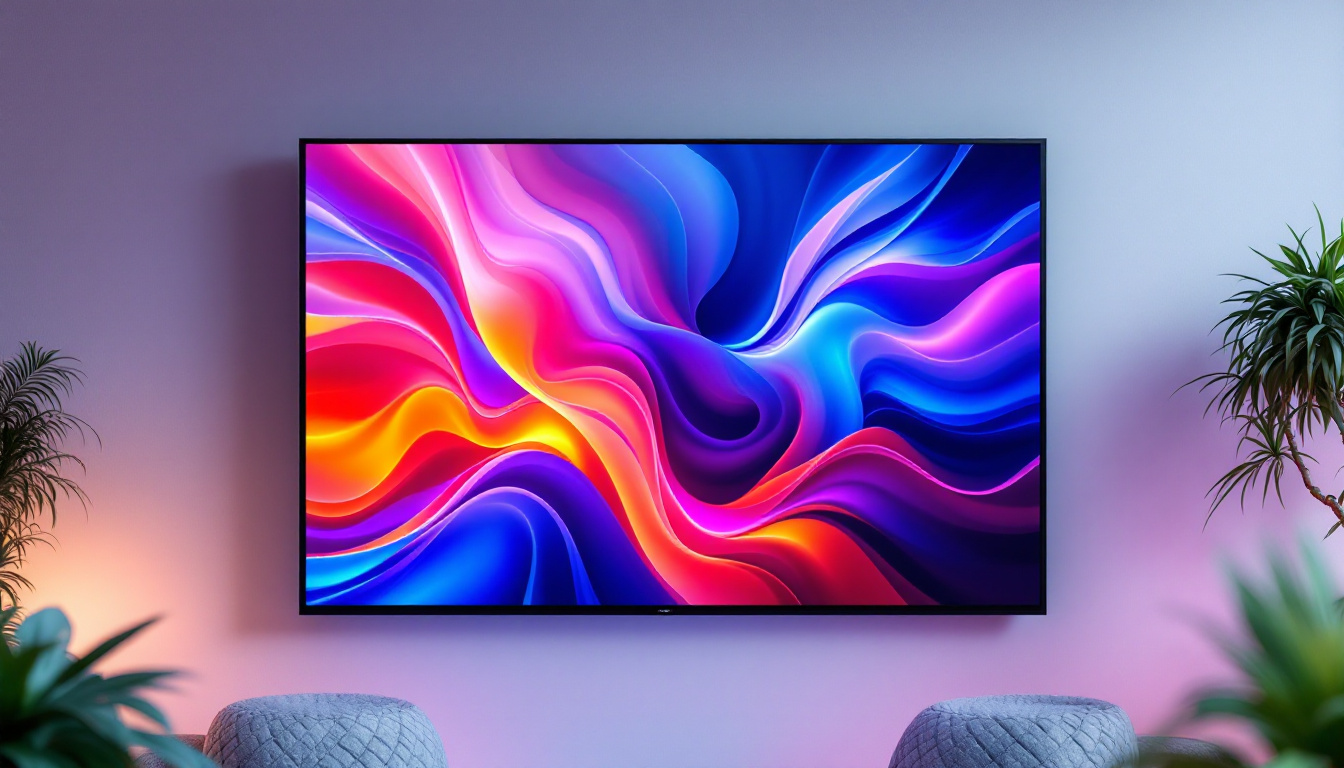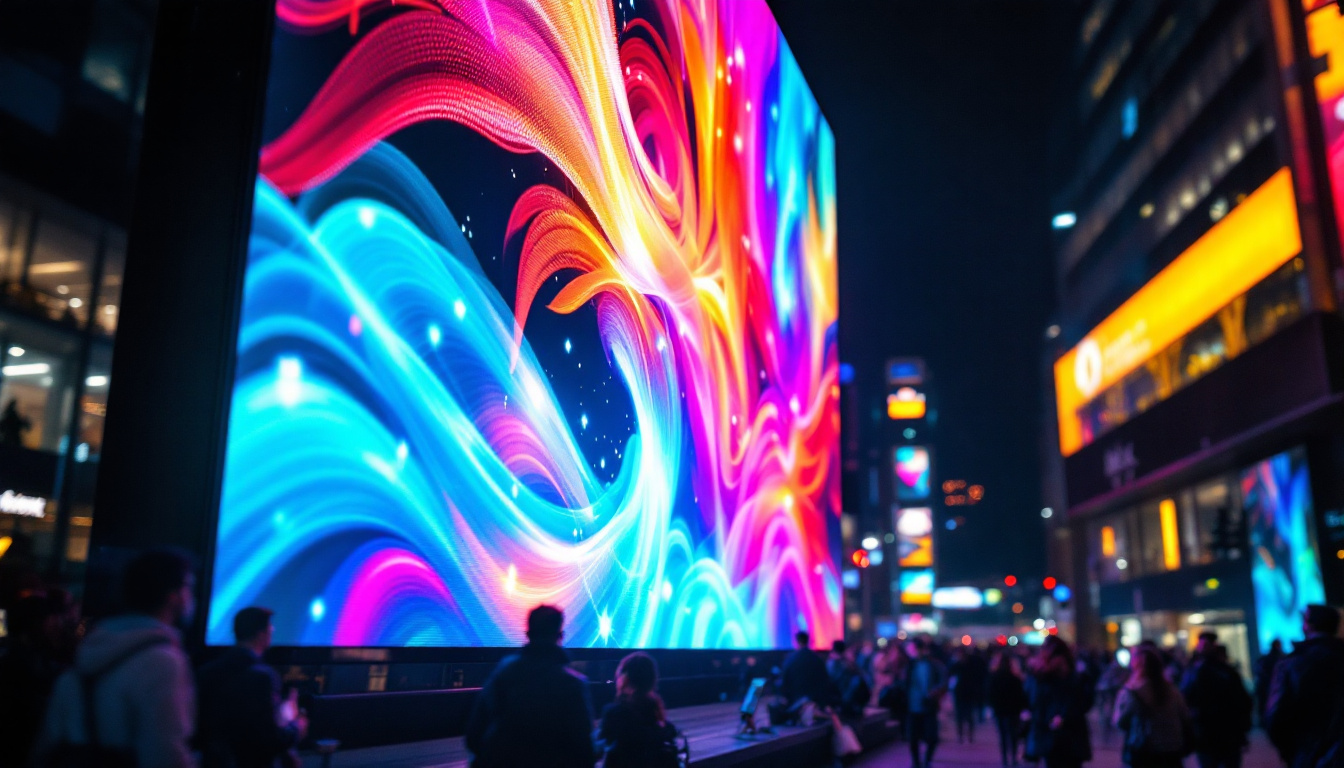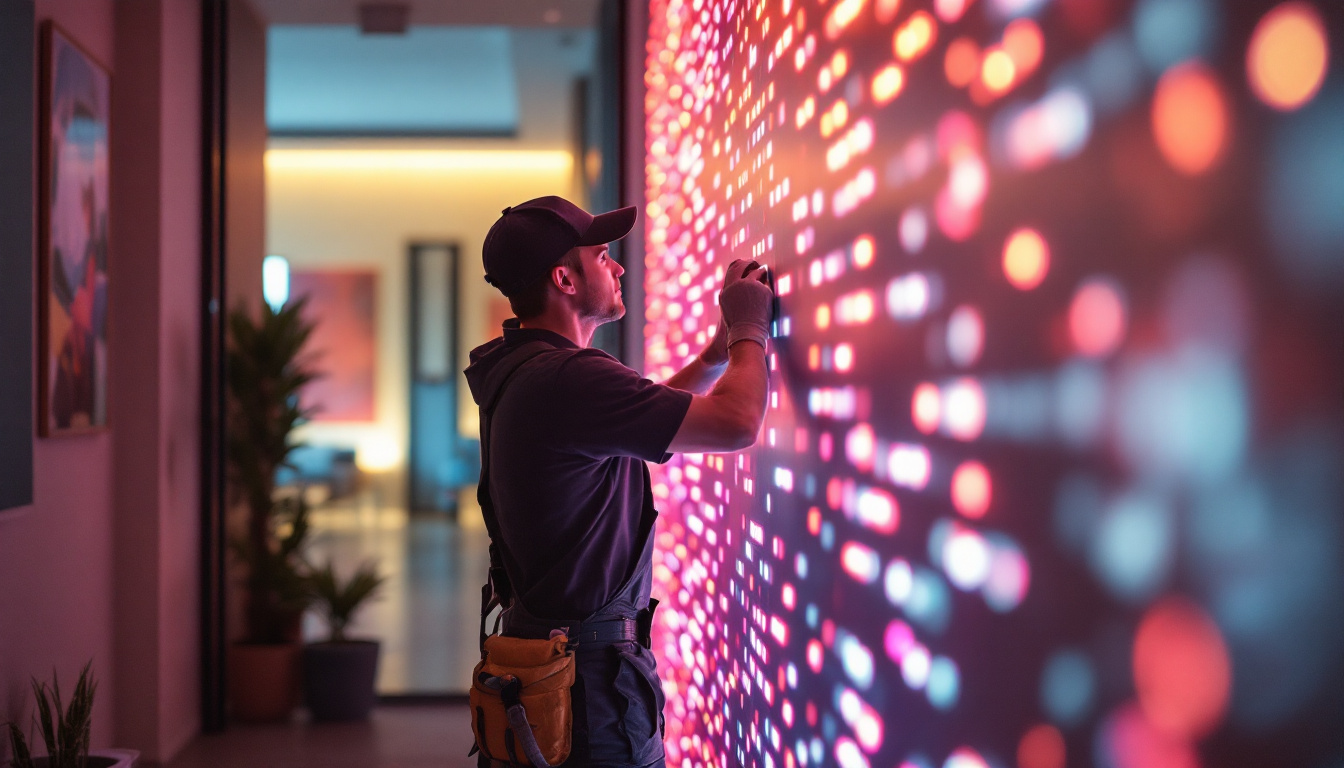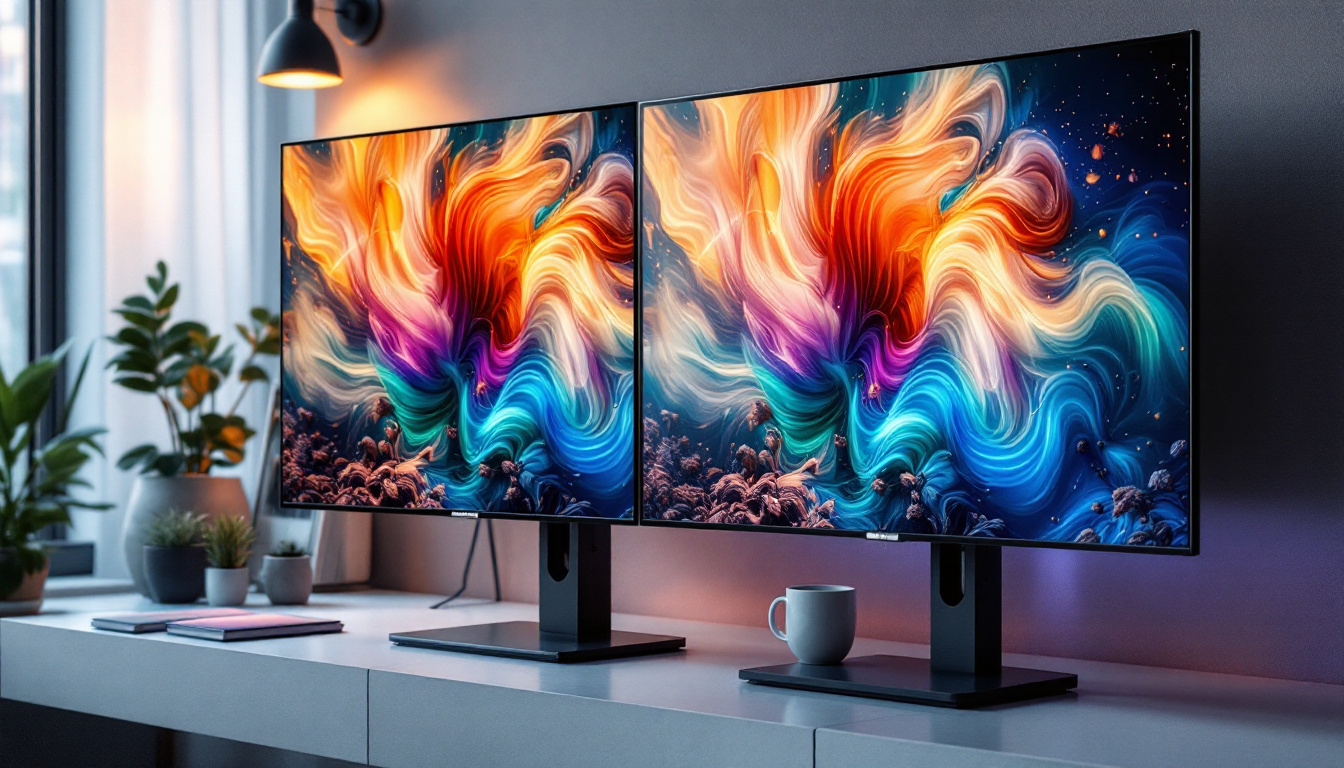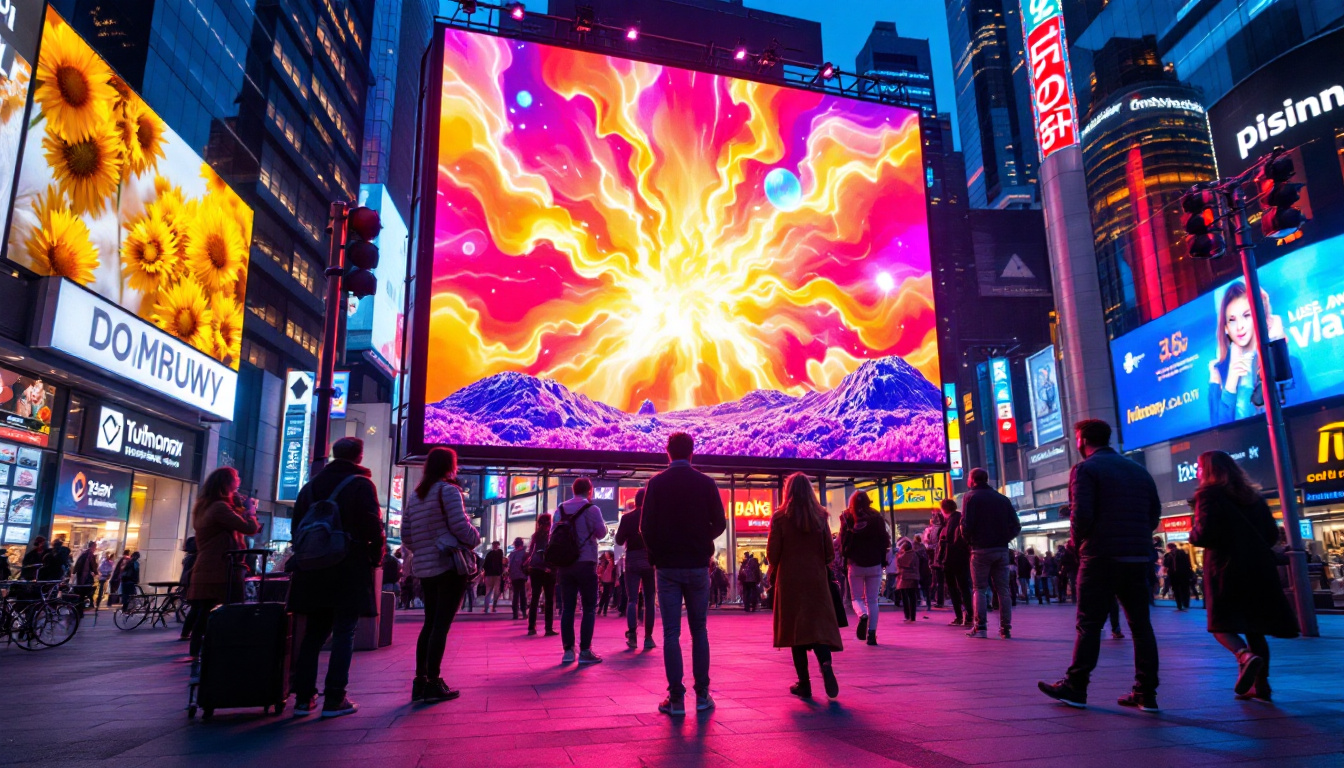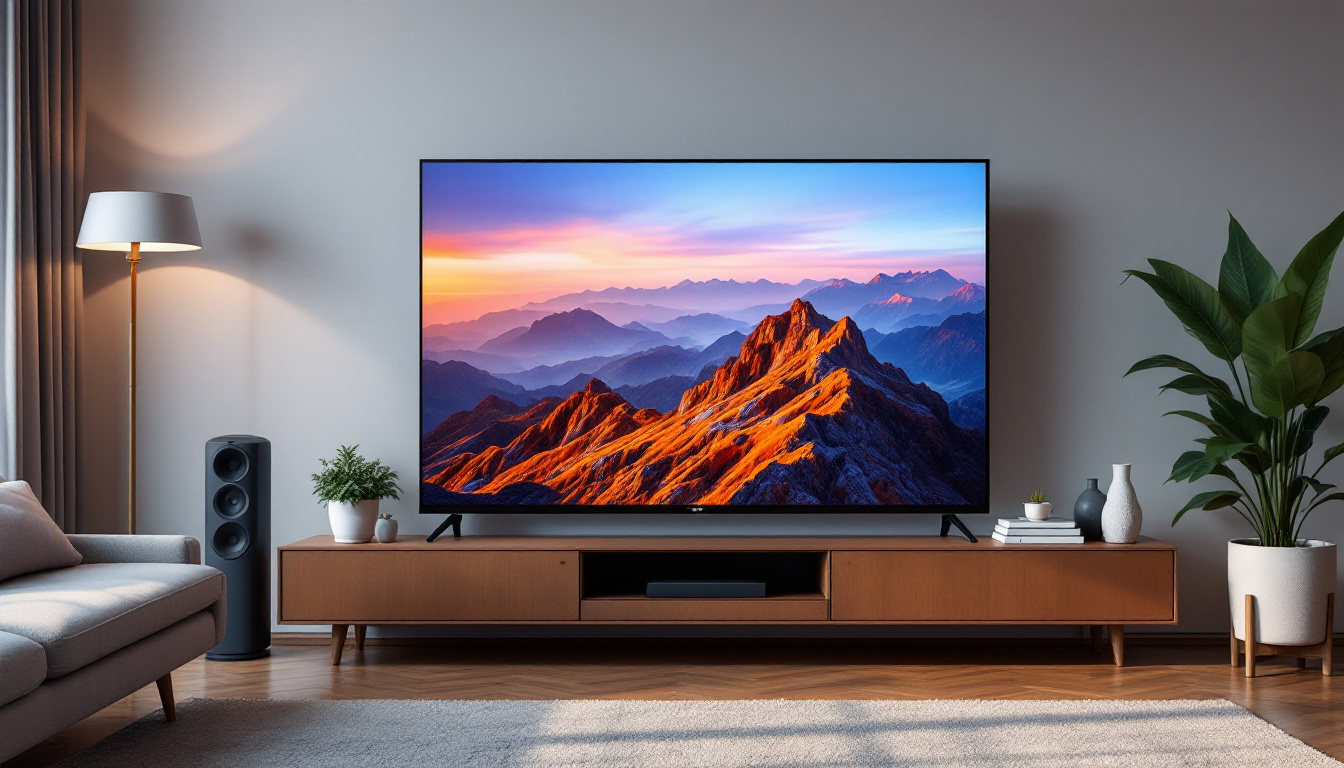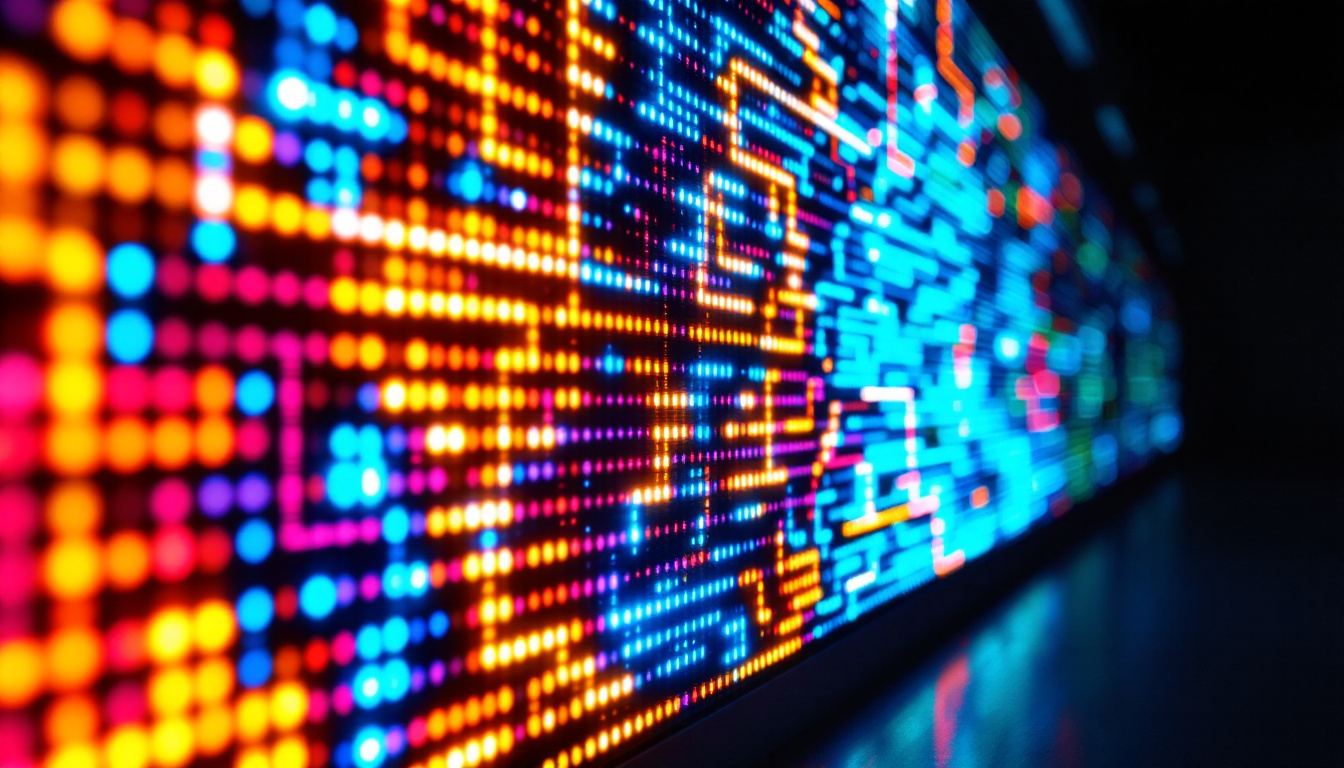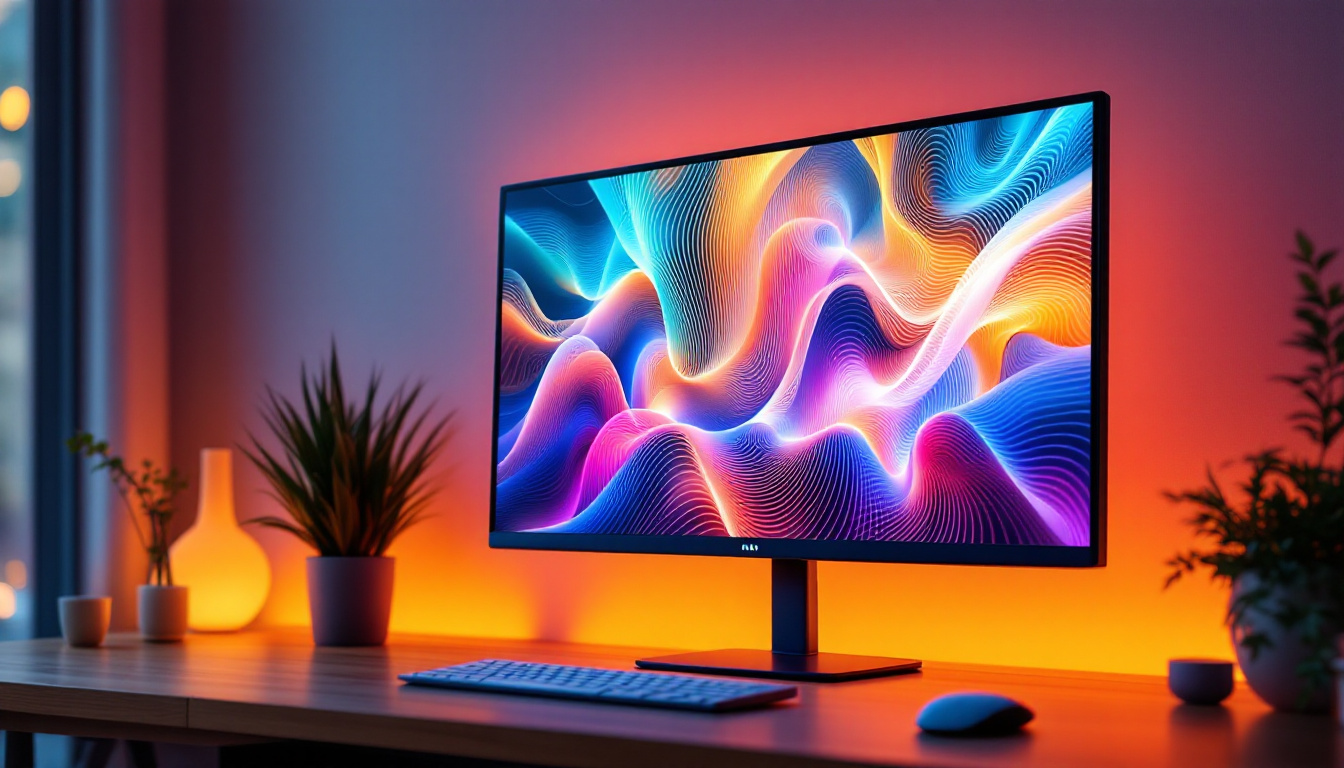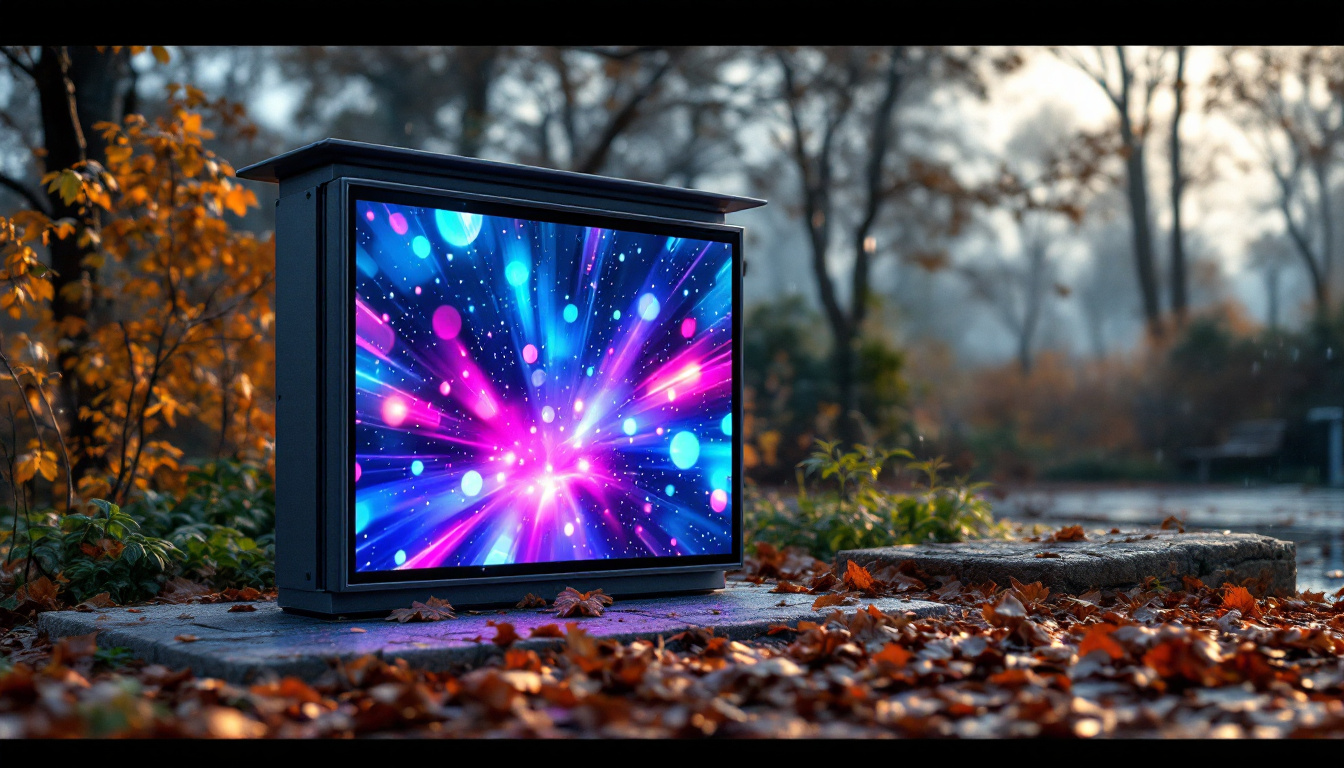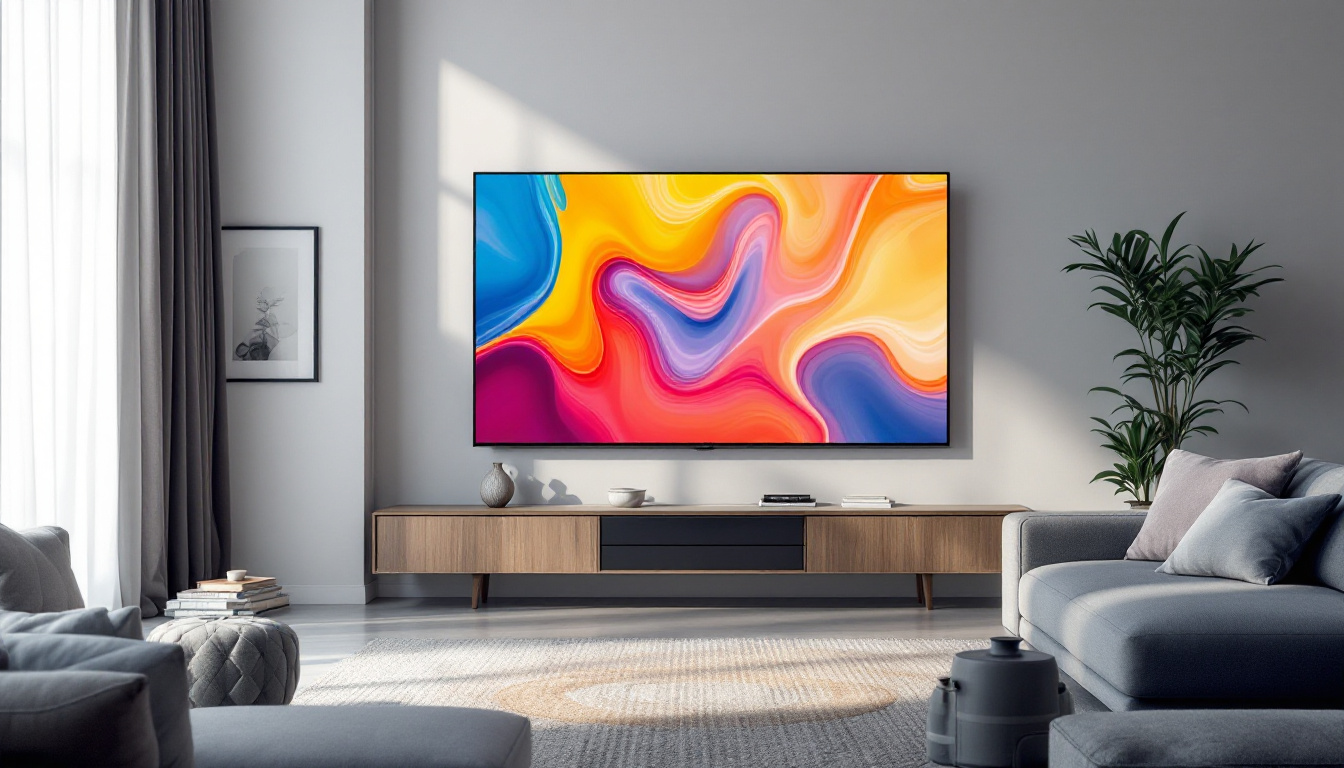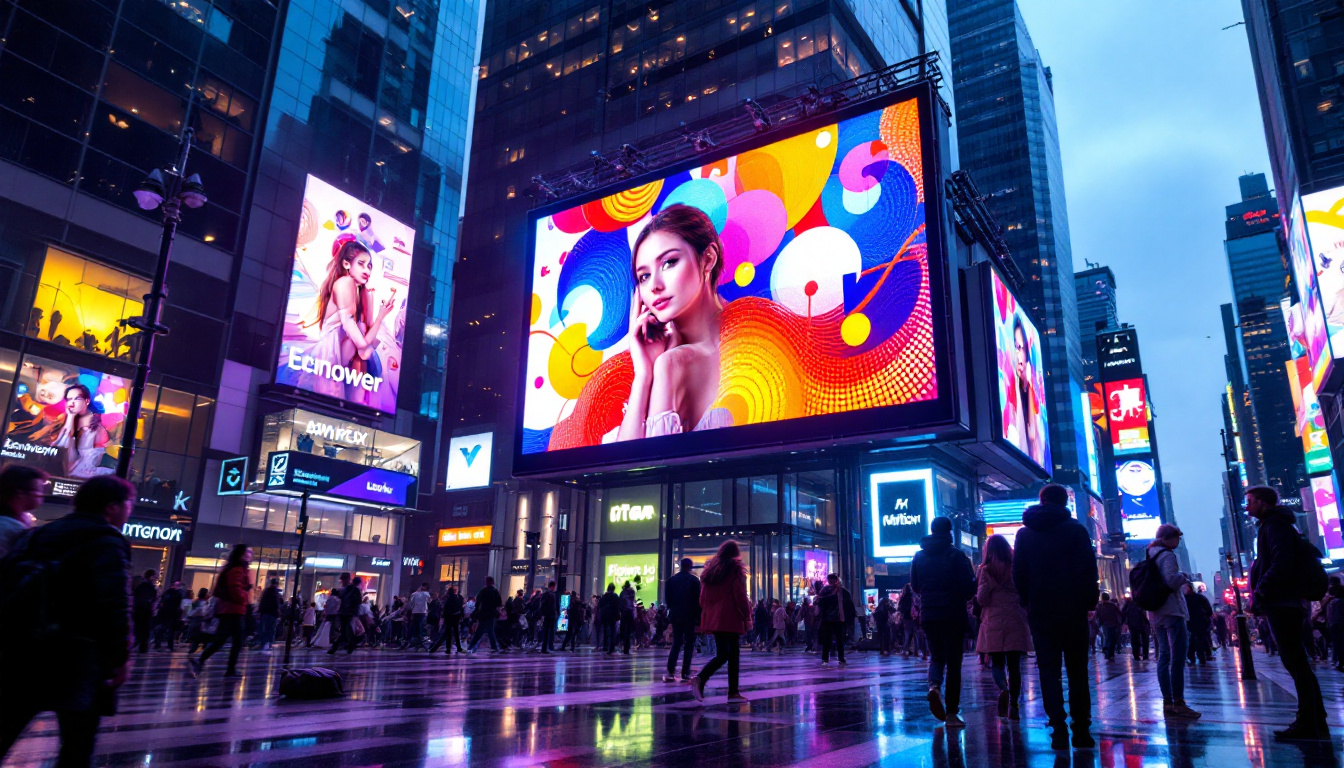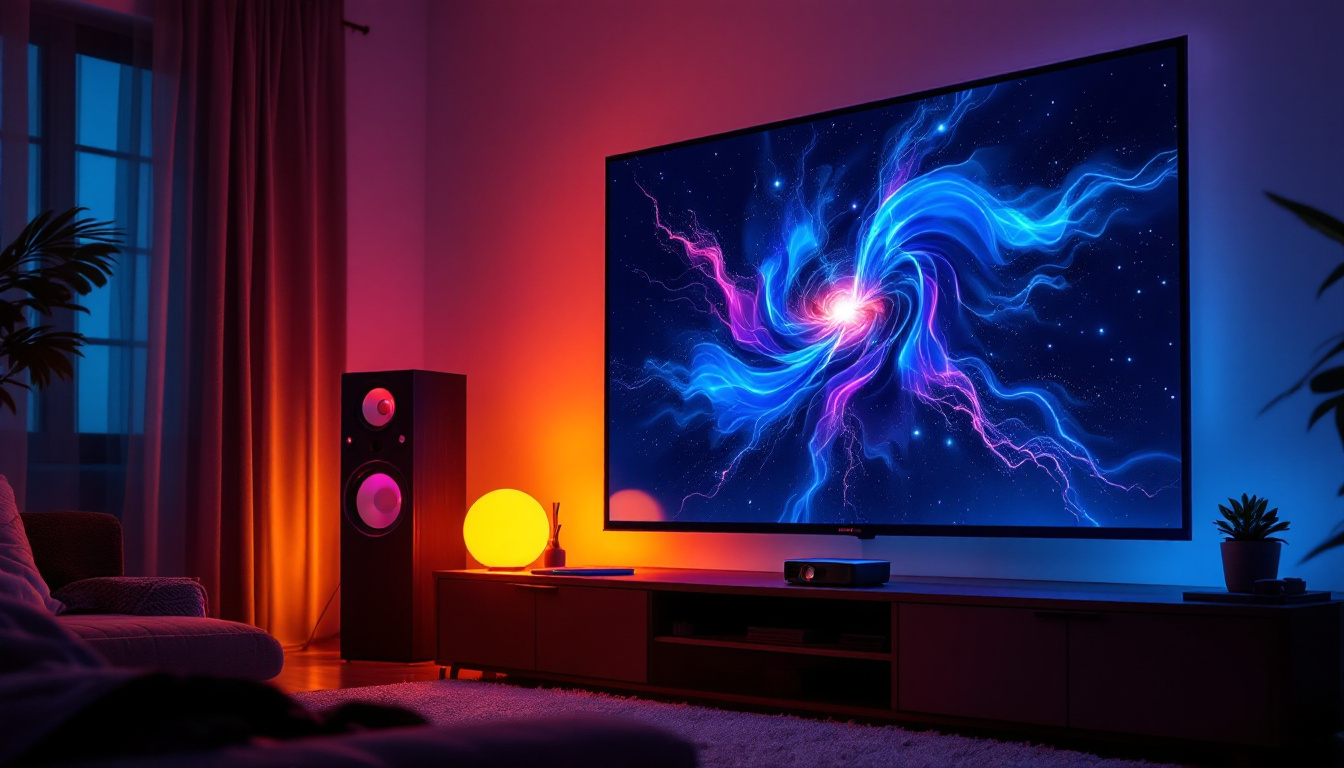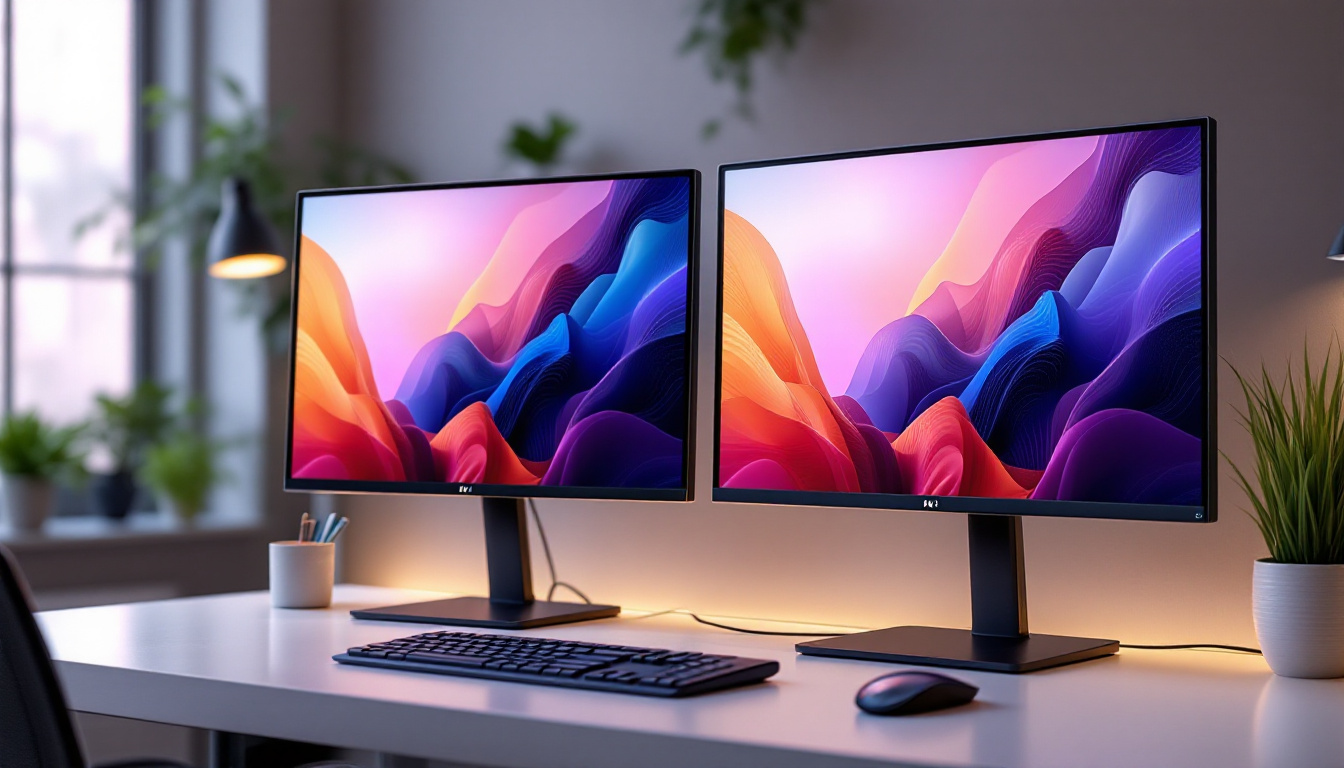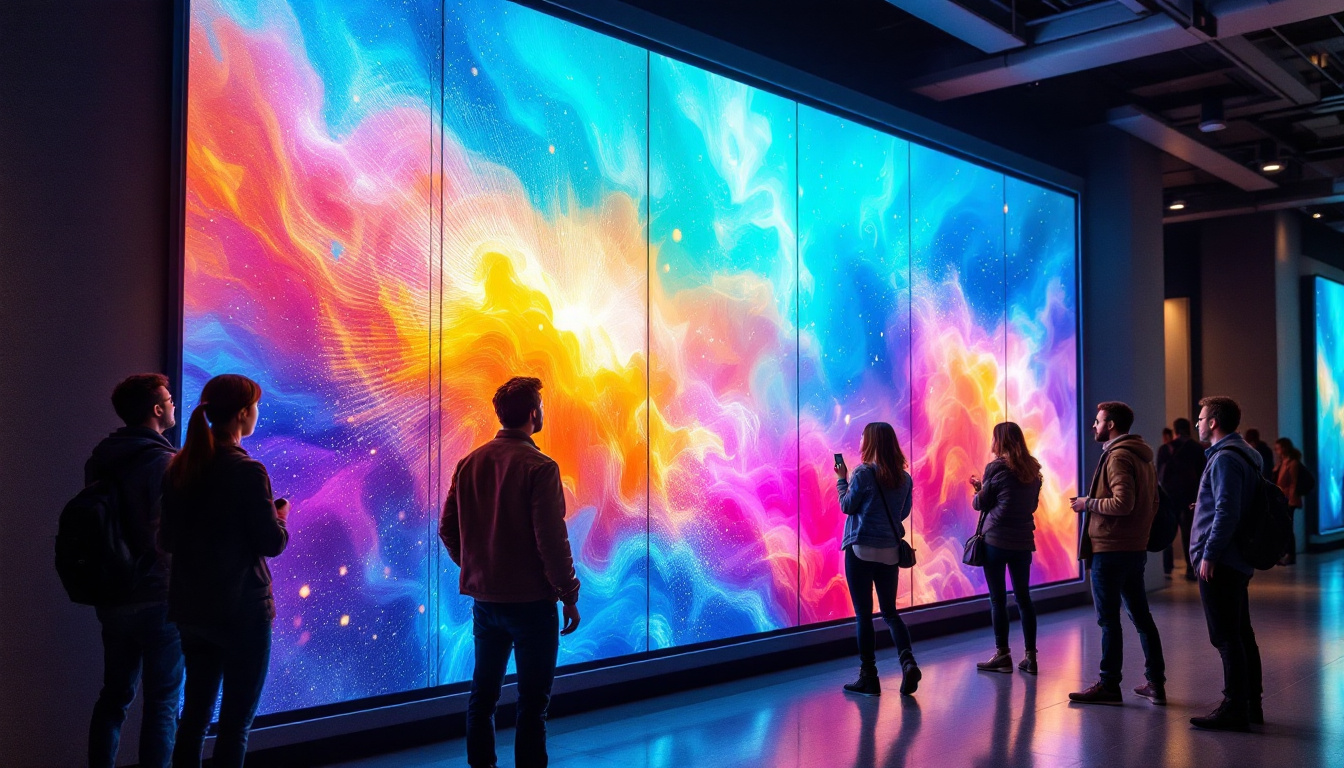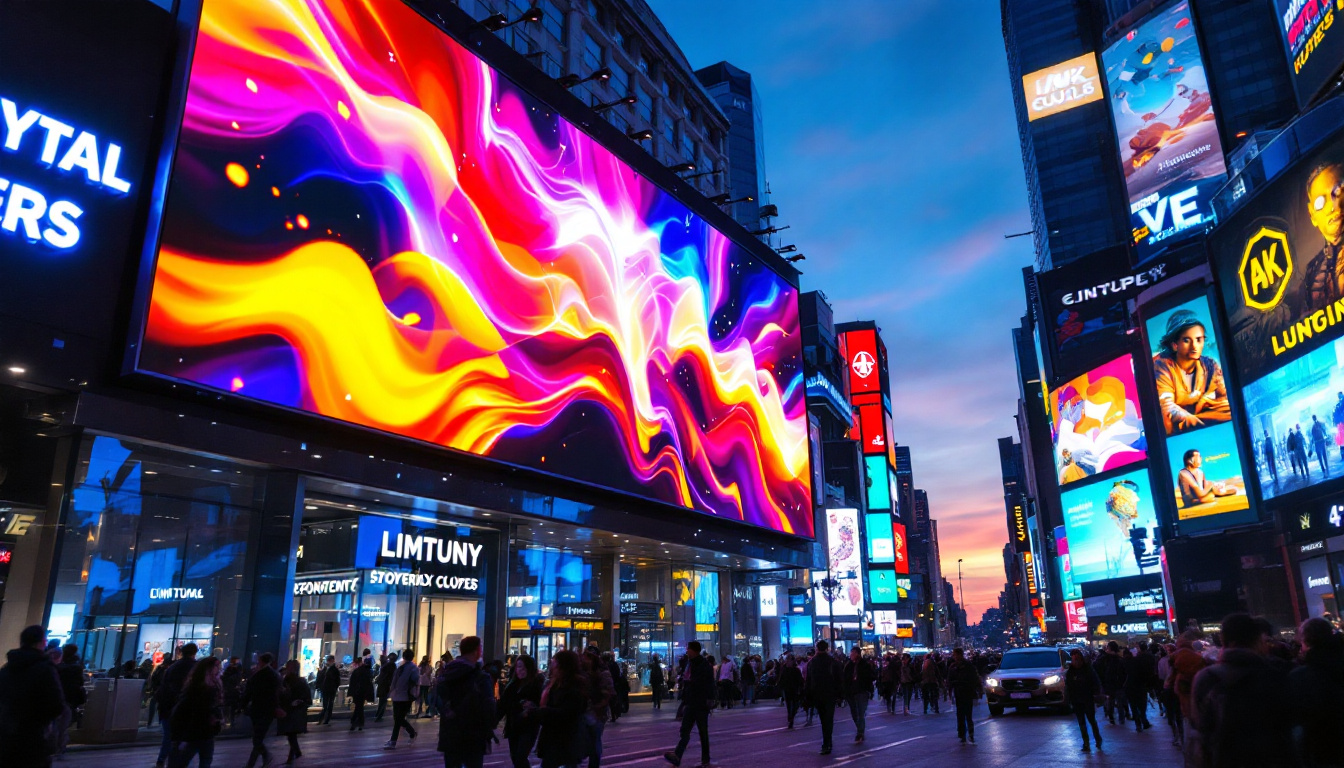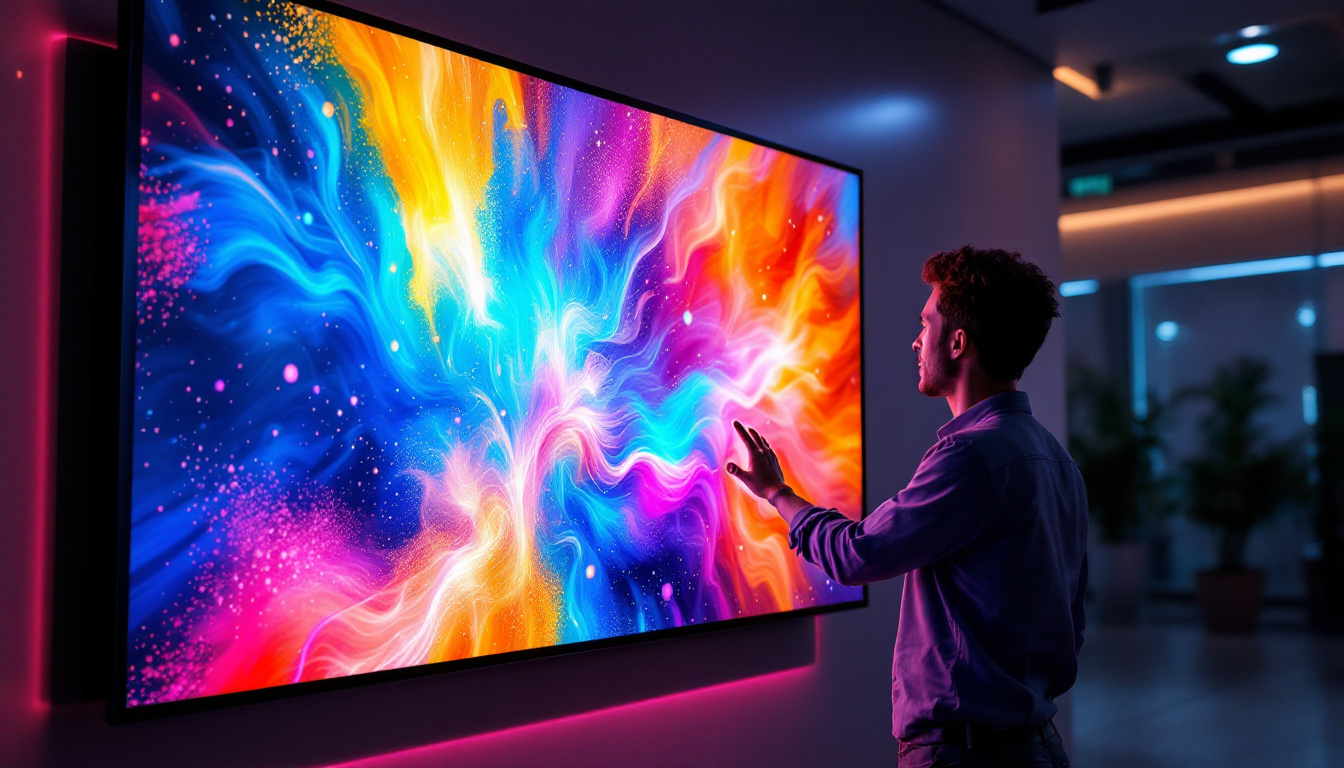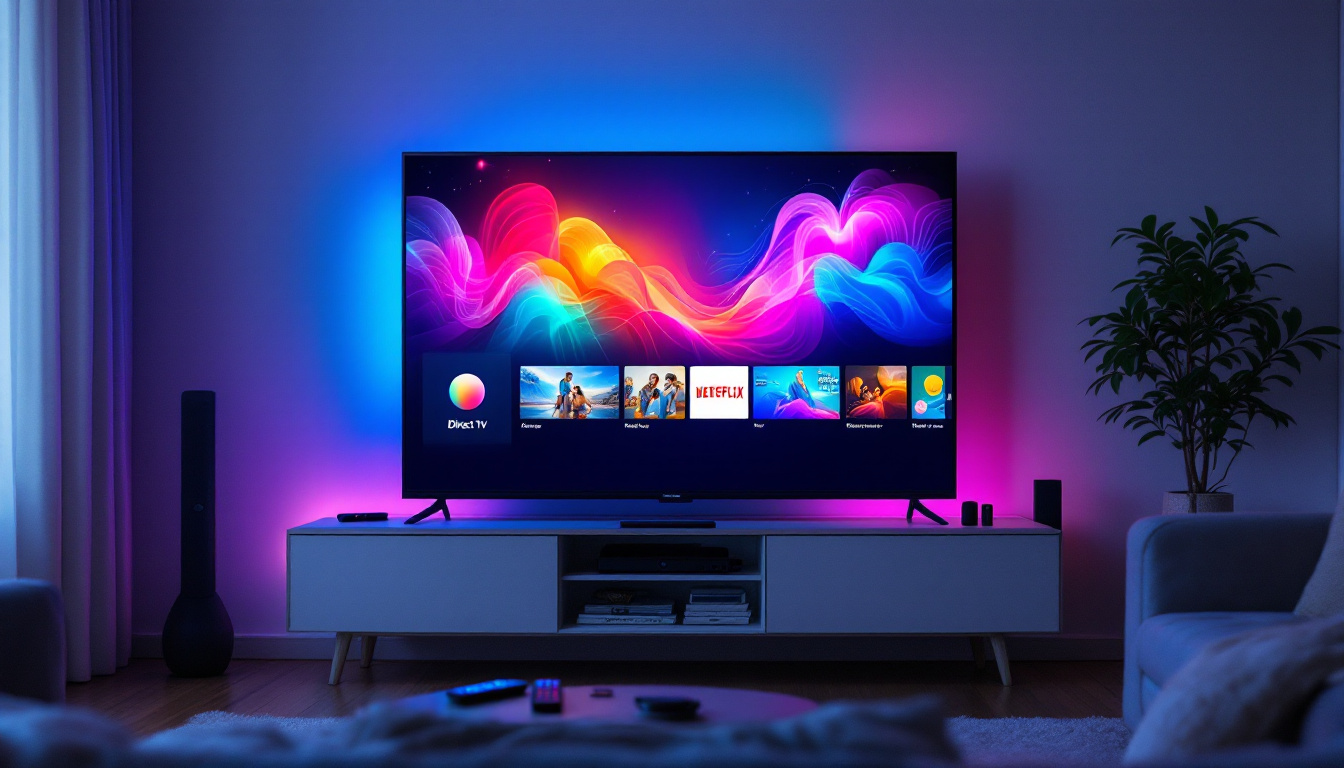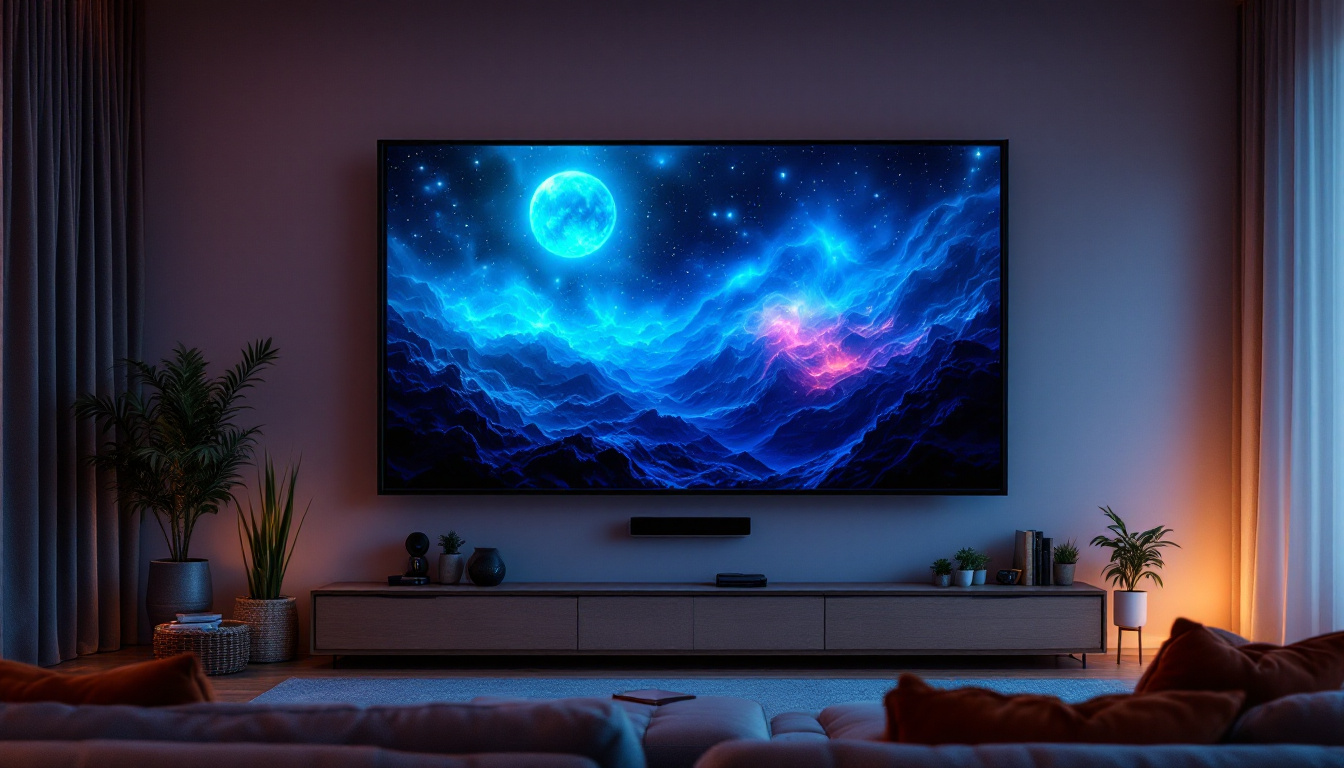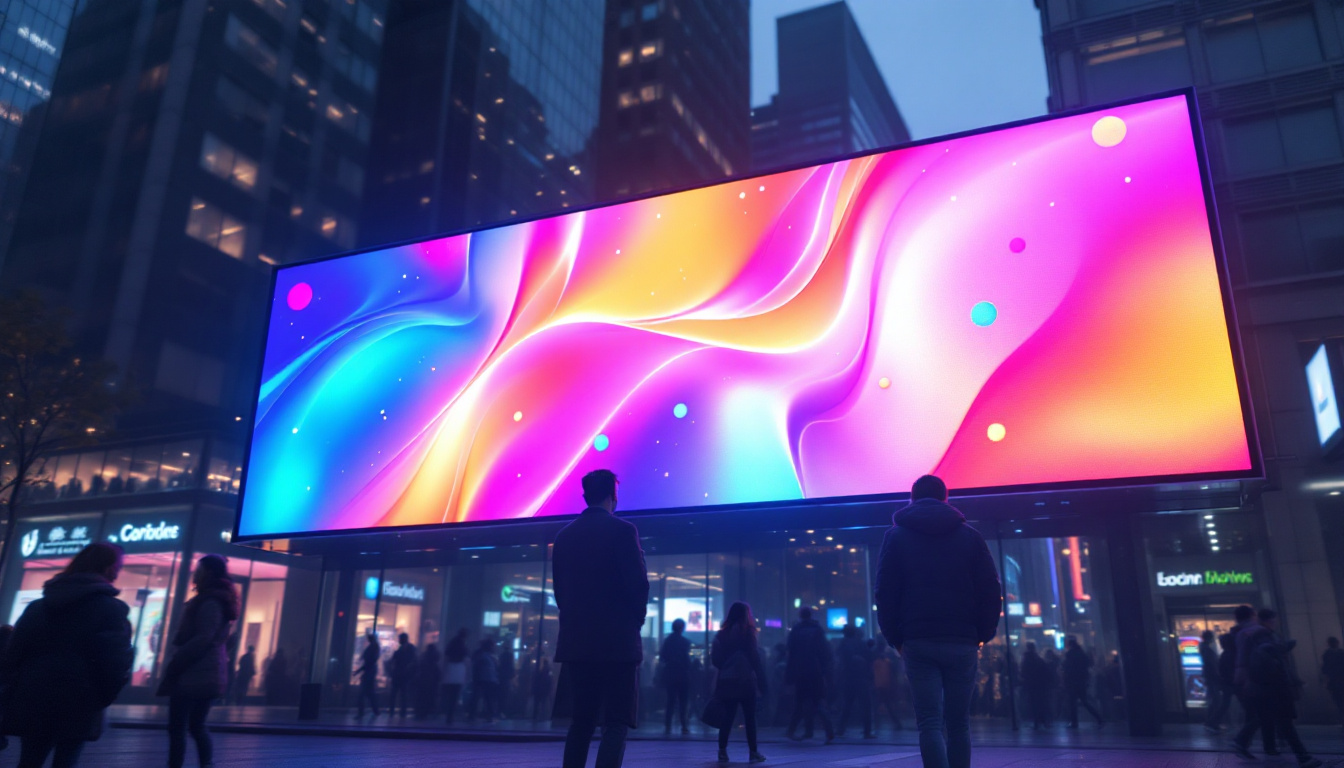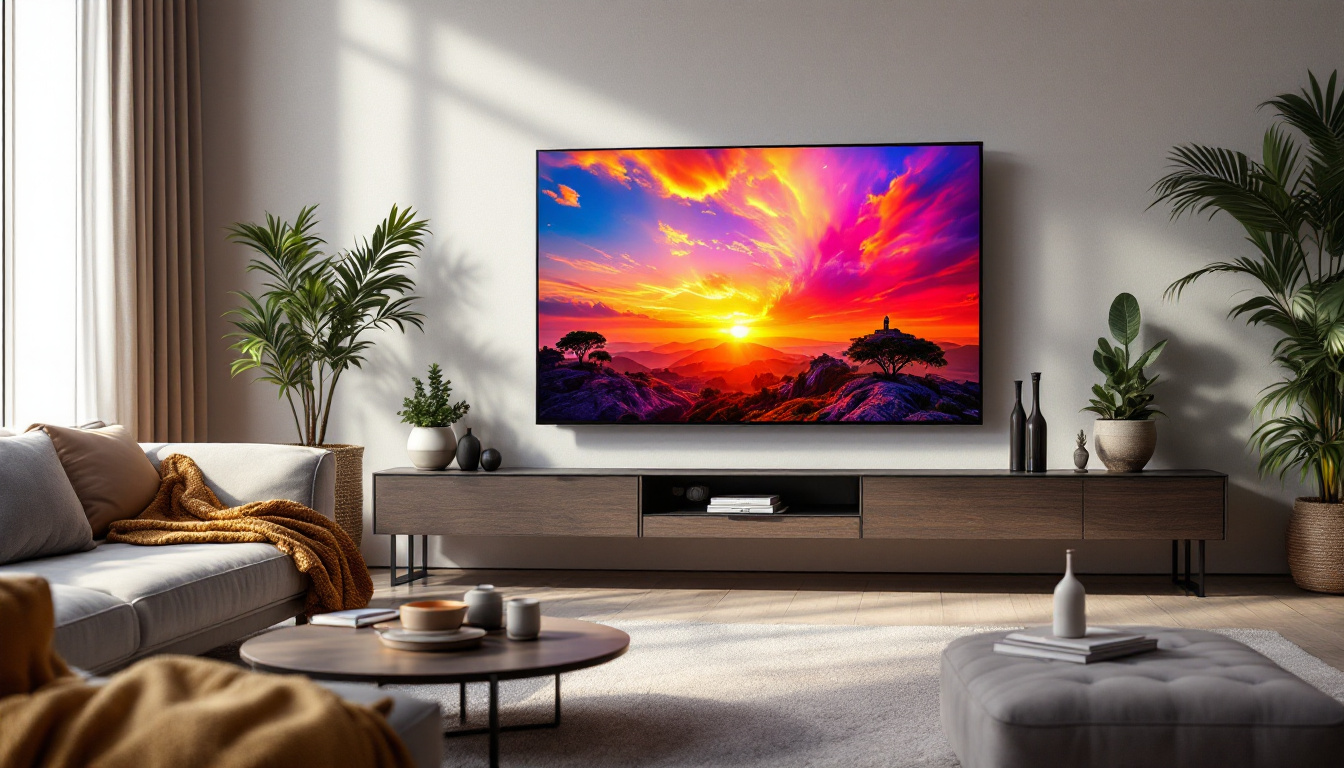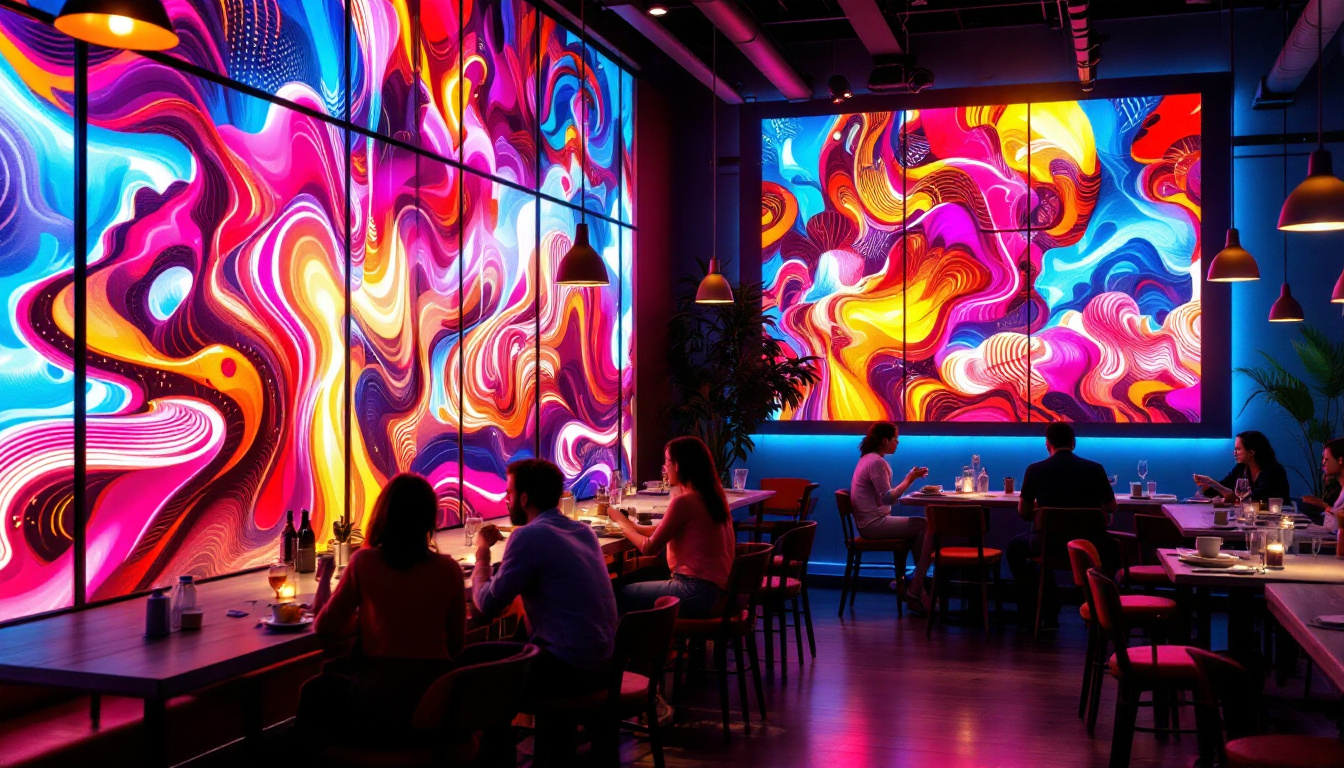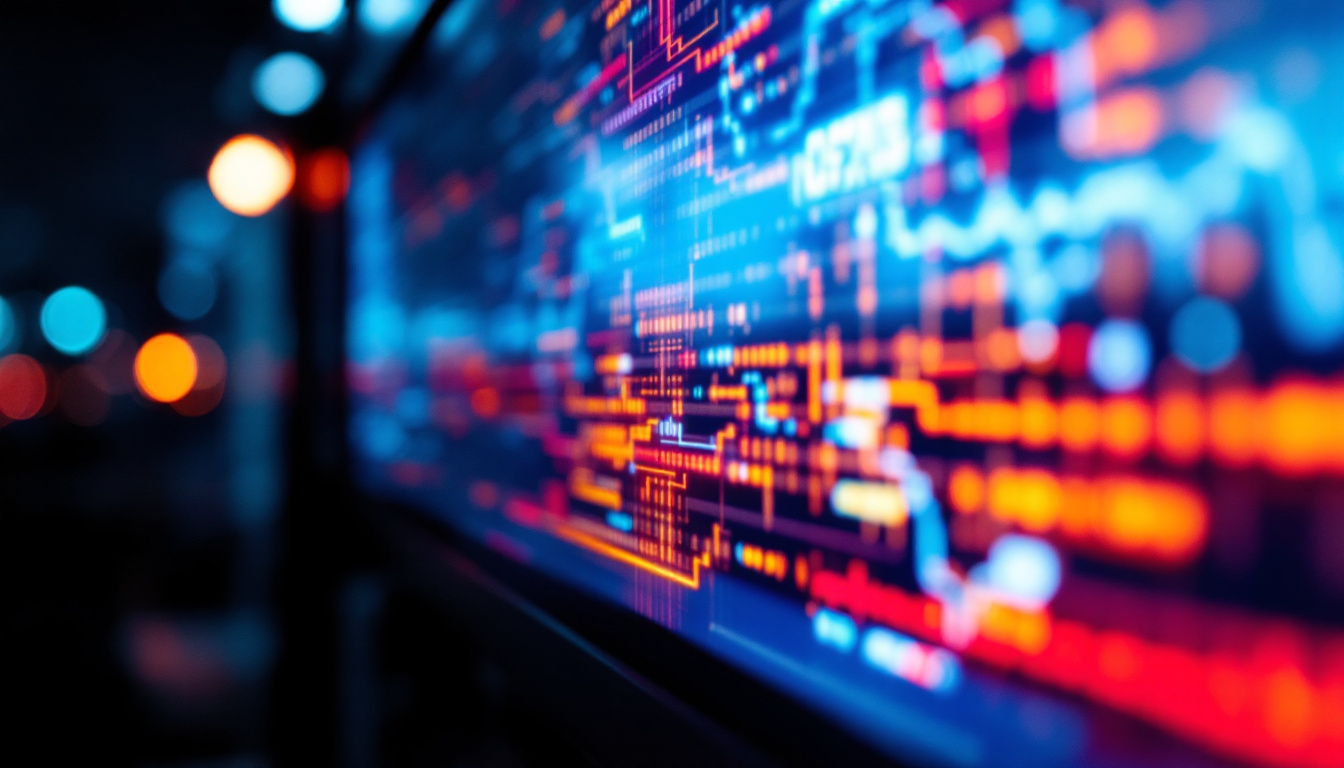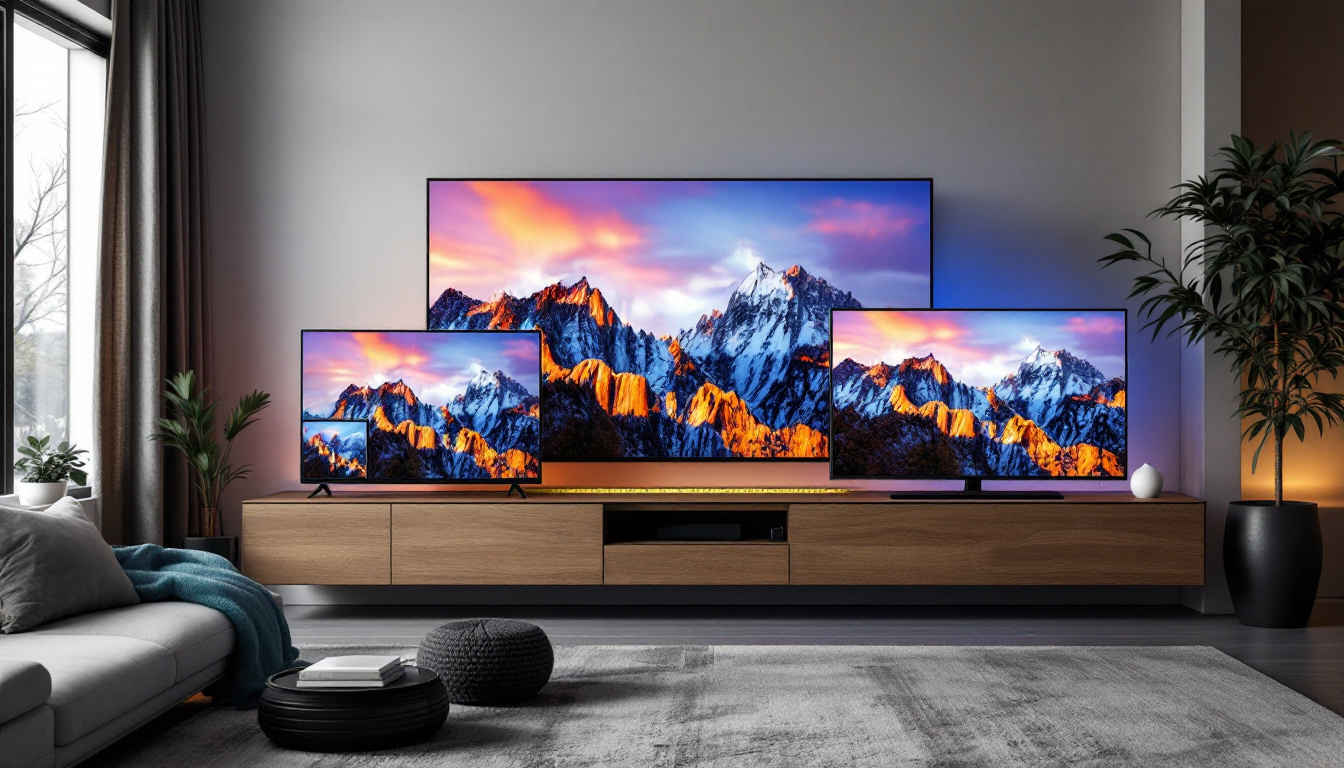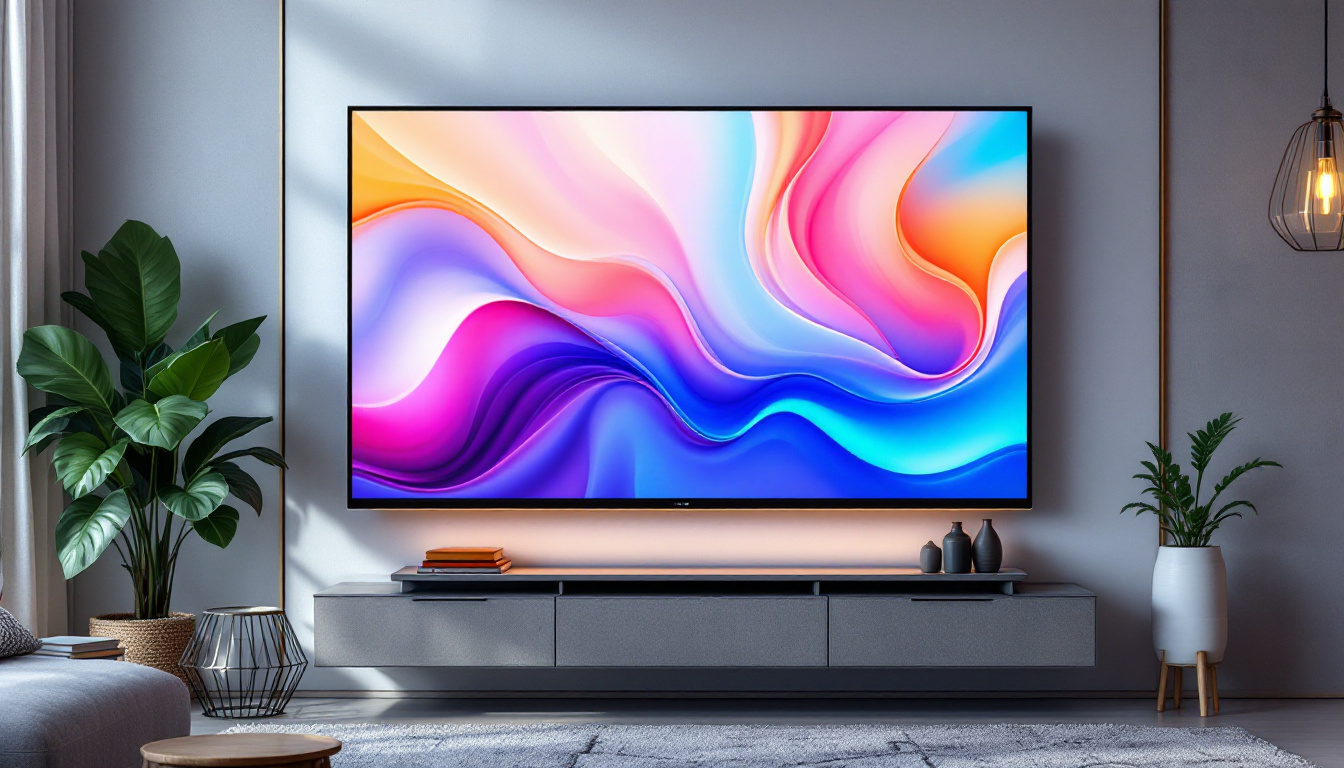In the realm of modern technology, flat display screens have become ubiquitous, transforming the way we consume information and entertainment. Among the various types of display technologies, LED (Light Emitting Diode) displays stand out for their vibrant colors, energy efficiency, and sleek designs. This article delves into the intricacies of LED displays, exploring their functionality, advantages, and applications.
Understanding LED Display Technology
LED displays are a type of flat panel display technology that utilizes light-emitting diodes as a source of illumination. Unlike traditional LCD (Liquid Crystal Display) screens that rely on fluorescent backlighting, LED displays use an array of tiny diodes to produce light, resulting in brighter and more vivid images.
The Basics of LED Technology
At its core, an LED display consists of a matrix of pixels, each containing red, green, and blue diodes. By adjusting the intensity of these diodes, the display can create a wide spectrum of colors. This ability to mix colors at the pixel level is what gives LED displays their sharp and dynamic visuals.
LED technology can be categorized into two main types: Direct LED and Edge-lit LED. Direct LED displays have diodes placed directly behind the screen, providing uniform brightness across the entire display. In contrast, Edge-lit LED displays have diodes positioned along the edges, with light directed across the screen. While Edge-lit displays are typically thinner and more energy-efficient, Direct LED displays often offer better color accuracy and contrast. Additionally, the choice between these two types can significantly impact the viewing experience, especially in environments with varying lighting conditions.
How LED Displays Work
The operation of an LED display involves several key processes. First, an electrical current is passed through the diodes, causing them to emit light. This light is then filtered through liquid crystals in the case of LCD technology, which modulate the light to create images. In pure LED displays, the diodes themselves can create images without the need for liquid crystals.
Moreover, advanced LED displays can incorporate technologies such as local dimming, where specific areas of the screen can be dimmed or brightened independently. This feature enhances contrast and improves the overall viewing experience, particularly in dark scenes. Furthermore, many modern LED displays also support high dynamic range (HDR) content, which allows for a more extensive range of brightness and color detail, making images appear more lifelike. This capability is particularly beneficial for cinematic experiences and gaming, where visual fidelity is paramount. As the technology continues to evolve, we can expect even more innovations that will further enhance the performance and versatility of LED displays.
Advantages of LED Displays
LED displays offer numerous advantages over traditional display technologies, making them a popular choice for both consumer and commercial applications.
Energy Efficiency
One of the most significant benefits of LED displays is their energy efficiency. Compared to older technologies, LED screens consume significantly less power, which not only reduces electricity bills but also contributes to a lower environmental impact. This efficiency is particularly beneficial for large installations, such as digital billboards and commercial displays, where energy savings can be substantial. Furthermore, the reduced energy consumption of LED displays translates into less heat generation, which can lead to lower cooling costs in environments where multiple screens are used, such as control rooms and broadcasting studios.
Superior Image Quality
LED displays are renowned for their superior image quality. With higher brightness levels and better color accuracy, they can produce stunning visuals that captivate viewers. The ability to achieve deeper blacks and brighter whites enhances contrast, making images more lifelike. Additionally, LED displays often have faster response times, reducing motion blur during fast-paced scenes. This exceptional image quality is not only advantageous for entertainment purposes, such as movies and video games, but also for professional applications like graphic design and medical imaging, where precise color representation is crucial for accurate results.
Longevity and Durability
Another notable advantage of LED technology is its longevity. LED displays typically have a lifespan of over 50,000 hours, which is significantly longer than traditional LCD or plasma displays. This durability makes them ideal for various applications, including outdoor signage and public displays, where exposure to the elements can be a concern. Additionally, LED displays are more resistant to shock and vibration, making them suitable for use in high-traffic areas and mobile applications, such as vehicles and portable advertising units. The combination of longevity and durability not only reduces the frequency of replacements but also minimizes maintenance costs, providing a more cost-effective solution in the long run.
Applications of LED Displays
LED displays have found applications across a wide range of industries, thanks to their versatility and performance. From consumer electronics to large-scale advertising, the use of LED technology is expanding rapidly.
Consumer Electronics
In the consumer electronics sector, LED displays are prevalent in televisions, computer monitors, and smartphones. The demand for high-definition content has driven manufacturers to adopt LED technology for its superior picture quality and energy efficiency. As a result, consumers can enjoy a more immersive viewing experience with vibrant colors and sharp details. Furthermore, advancements in LED technology, such as OLED (Organic Light Emitting Diode) and MicroLED, are pushing the boundaries of display capabilities, offering deeper blacks and enhanced contrast ratios. This evolution not only caters to the gaming and entertainment industries but also enhances productivity in professional environments, where accurate color representation is crucial for graphic design and video editing.
Advertising and Digital Signage
In the realm of advertising, LED displays have revolutionized how brands communicate with consumers. Digital billboards and signage utilize LED technology to deliver dynamic content that can be updated in real-time. This capability allows businesses to engage audiences with eye-catching visuals and timely promotions, enhancing the effectiveness of their marketing strategies. Moreover, the integration of smart technology into LED displays enables targeted advertising based on demographic data, location, and even weather conditions. This level of customization not only maximizes the impact of advertising campaigns but also provides valuable analytics to businesses, allowing them to refine their strategies and improve customer engagement.
Architectural and Decorative Lighting
Beyond traditional display applications, LED technology is increasingly used in architectural and decorative lighting. LED strips and panels can be integrated into building designs, creating stunning visual effects and enhancing aesthetics. This versatility allows for creative expression in both residential and commercial spaces, making LED lighting a popular choice among architects and designers. In addition to their aesthetic appeal, LED lights offer significant energy savings compared to traditional lighting solutions, which is an attractive feature for environmentally conscious builders and homeowners. Furthermore, programmable LED lighting systems can create dynamic atmospheres by changing colors and intensities based on the time of day or specific events, providing a unique and customizable experience for occupants and visitors alike.
Challenges and Considerations
While LED displays offer numerous benefits, there are also challenges and considerations that potential users should be aware of.
Cost Factors
The initial cost of LED displays can be higher than that of traditional display technologies. Although prices have been decreasing over the years, high-quality LED screens still require a significant investment. Businesses and consumers must weigh the long-term benefits against the upfront costs to make informed decisions. Additionally, the total cost of ownership should be considered, which includes maintenance, energy consumption, and potential upgrades. Over time, the energy efficiency of LED technology can lead to substantial savings, making it a more economically viable option in the long run.
Viewing Angles and Color Consistency
Another consideration is the viewing angle. While many LED displays provide excellent color and brightness from head-on, some may exhibit color shifting or reduced brightness when viewed from an angle. This limitation can impact the effectiveness of displays in certain settings, such as large auditoriums or public spaces. Furthermore, the technology used in LED displays can vary significantly, with some models employing advanced techniques like wide viewing angle technology to mitigate these issues. Understanding the specifications of different LED products is crucial for ensuring that the display meets the specific needs of the environment in which it will be used.
Environmental Impact
Beyond performance and cost, the environmental impact of LED displays is another important factor to consider. While LEDs are generally more energy-efficient than their traditional counterparts, the production and disposal of electronic components can pose environmental challenges. The manufacturing process often involves the use of rare materials and chemicals, which can be harmful if not managed properly. Additionally, as technology evolves, older LED displays may contribute to electronic waste if not recycled responsibly. Therefore, users should look for manufacturers that prioritize sustainable practices, including recycling programs and eco-friendly materials, to minimize their ecological footprint.
Technological Advancements
As the market for LED displays continues to grow, rapid technological advancements are also shaping the landscape. Innovations such as microLED and OLED technologies are emerging, offering even greater color accuracy, contrast ratios, and flexibility in display design. These advancements can provide users with more options tailored to specific applications, whether for high-end entertainment, advertising, or information dissemination. However, with new technologies come new challenges, including compatibility issues and the need for ongoing education about the latest features and capabilities. Staying informed about these developments is essential for users looking to leverage the full potential of LED display technology.
The Future of LED Display Technology
The future of LED display technology looks promising, with ongoing advancements poised to enhance performance and expand applications.
MicroLED and OLED Innovations
Emerging technologies such as MicroLED and OLED (Organic Light Emitting Diode) are set to redefine the landscape of display technology. MicroLED displays, which utilize microscopic diodes, offer even greater brightness, contrast, and energy efficiency. Meanwhile, OLED technology provides exceptional color accuracy and flexibility, allowing for curved and foldable displays.
Integration with Smart Technology
As smart technology continues to evolve, LED displays are increasingly being integrated into smart home systems and IoT (Internet of Things) applications. This integration enables users to control and customize their viewing experiences through voice commands and mobile apps, further enhancing convenience and interactivity.
Conclusion
LED displays have transformed the way we interact with visual content, offering unparalleled image quality, energy efficiency, and versatility. From consumer electronics to advertising and architectural applications, the impact of LED technology is profound and far-reaching. As advancements continue to emerge, the future of LED displays promises even more exciting developments, ensuring that they remain at the forefront of display technology for years to come.
In summary, understanding LED displays is essential for anyone looking to navigate the modern digital landscape. With their numerous advantages and wide-ranging applications, LED displays are not just a trend; they are a fundamental component of how we experience visual media today.
Explore Cutting-Edge LED Display Solutions with LumenMatrix
Ready to elevate your visual experience with the latest in LED display technology? Discover LumenMatrix’s innovative solutions, designed to bring your brand to life and captivate your audience. From vibrant Indoor and Outdoor LED Wall Displays to dynamic Vehicle and Sports LED Displays, LumenMatrix offers a wide array of options including LED Poster Displays, Floor LED Displays, Custom LED Displays, All-in-One LED Displays, and LED Transparent Displays. Embrace the future of visual communication and check out LumenMatrix LED Display Solutions today to see how we can help you make a lasting impression with clarity and impact.

